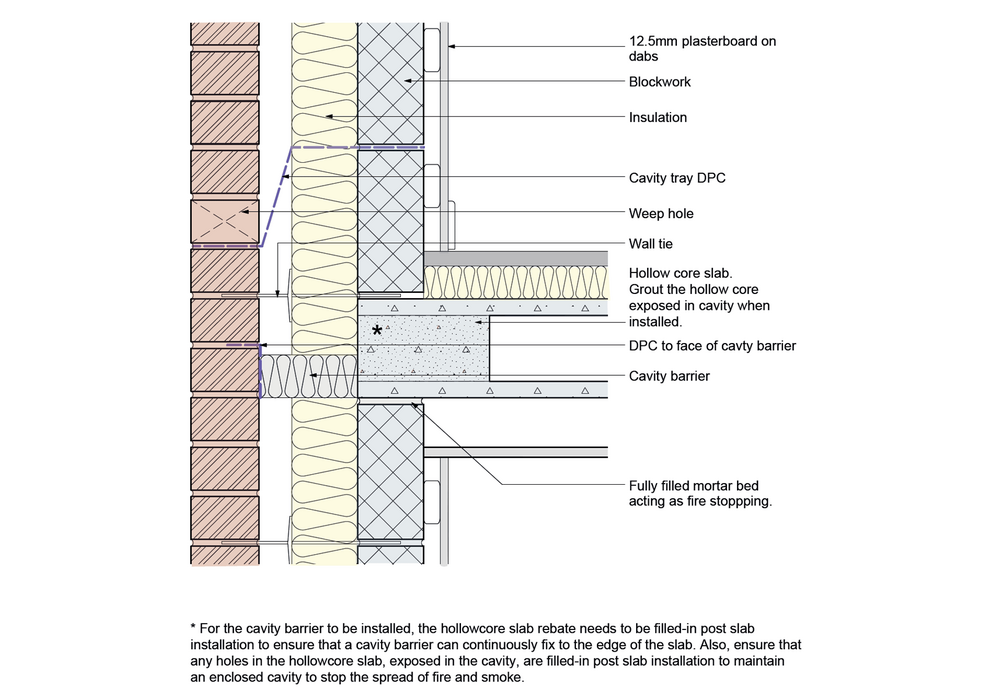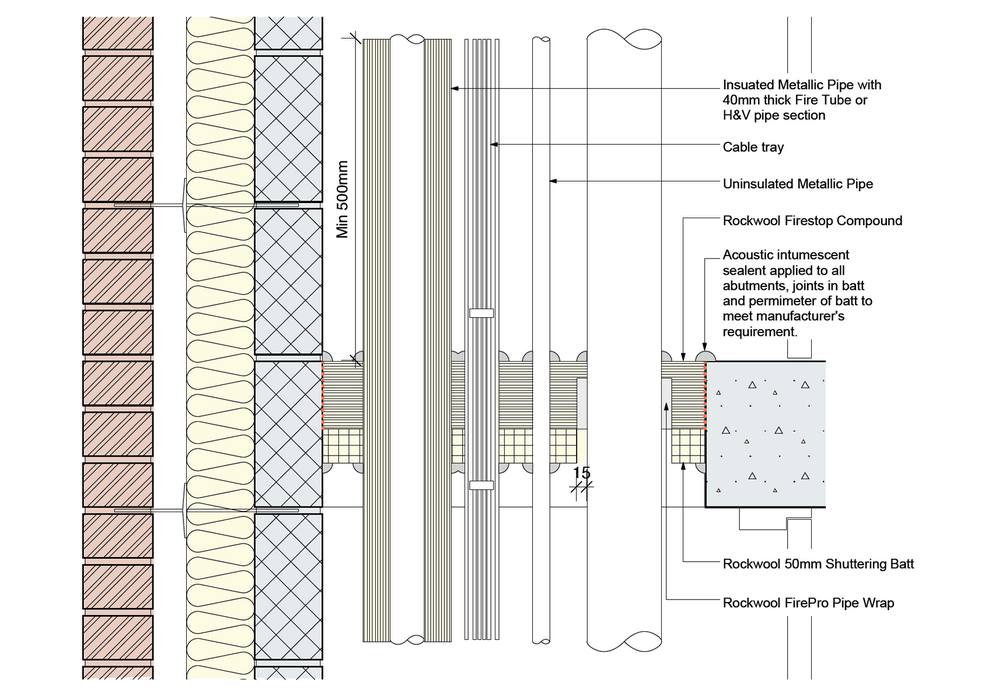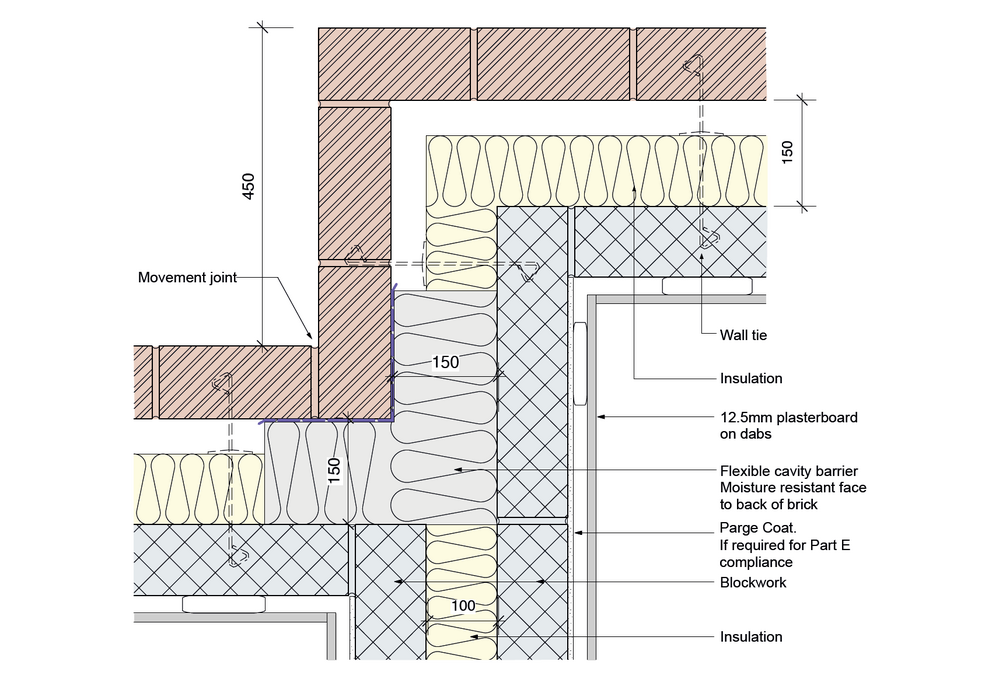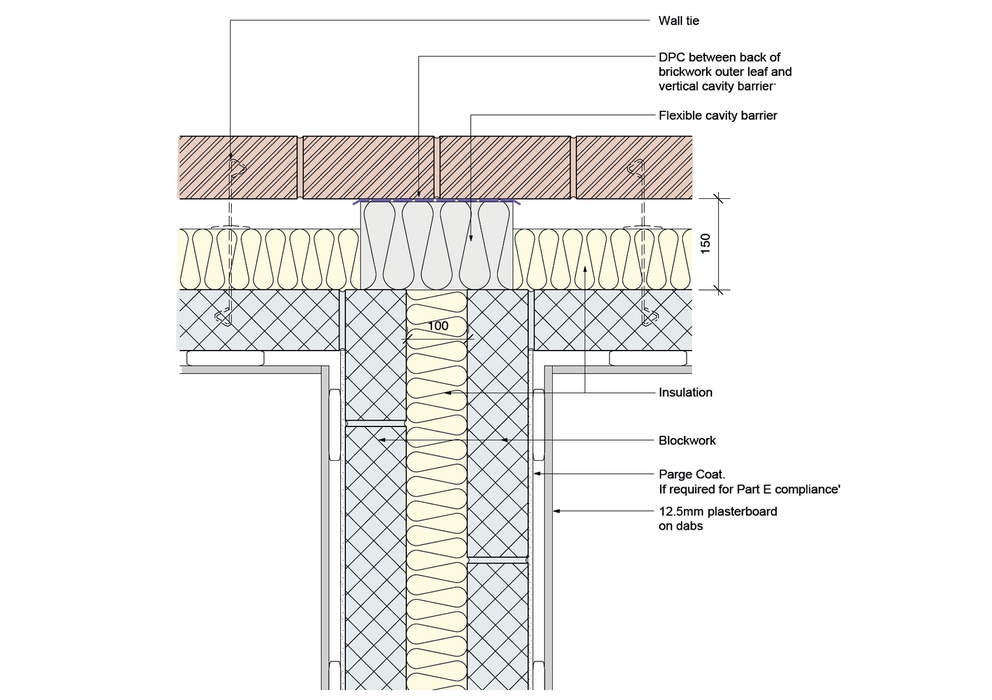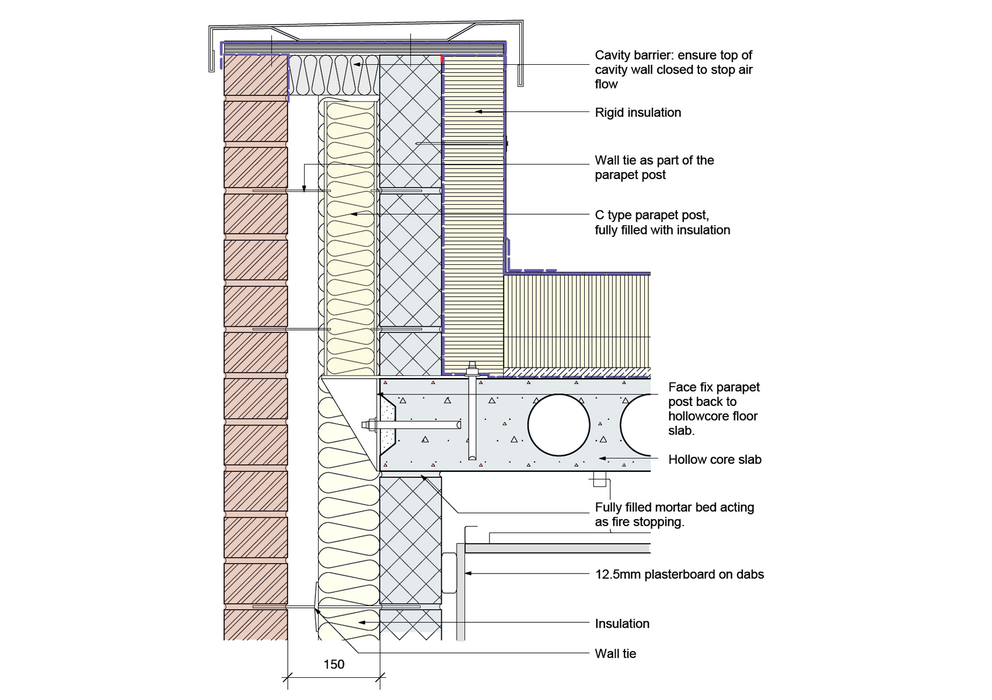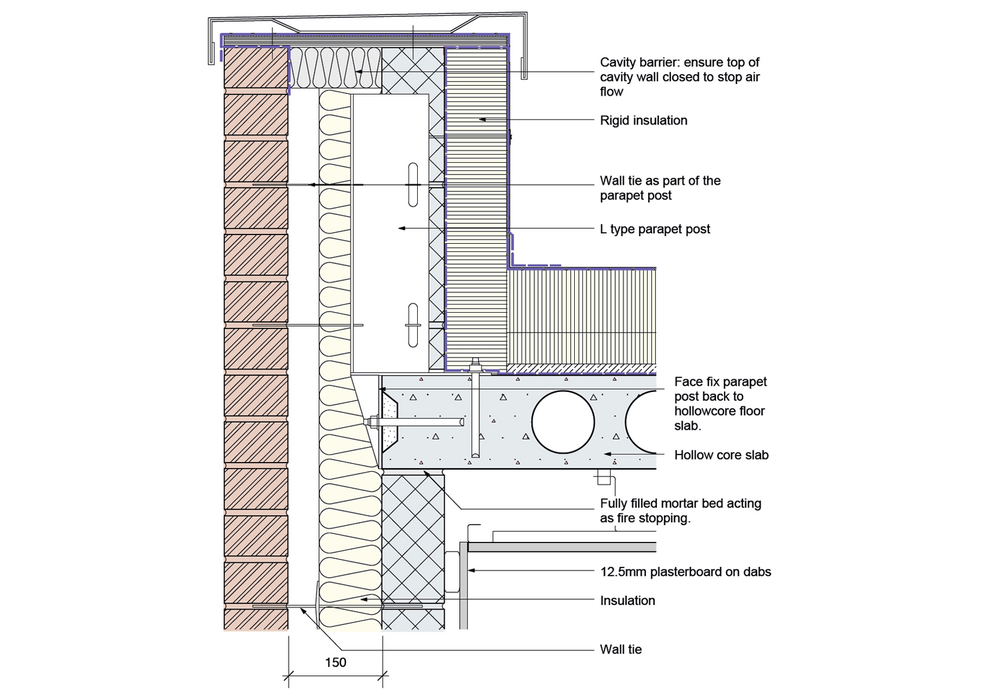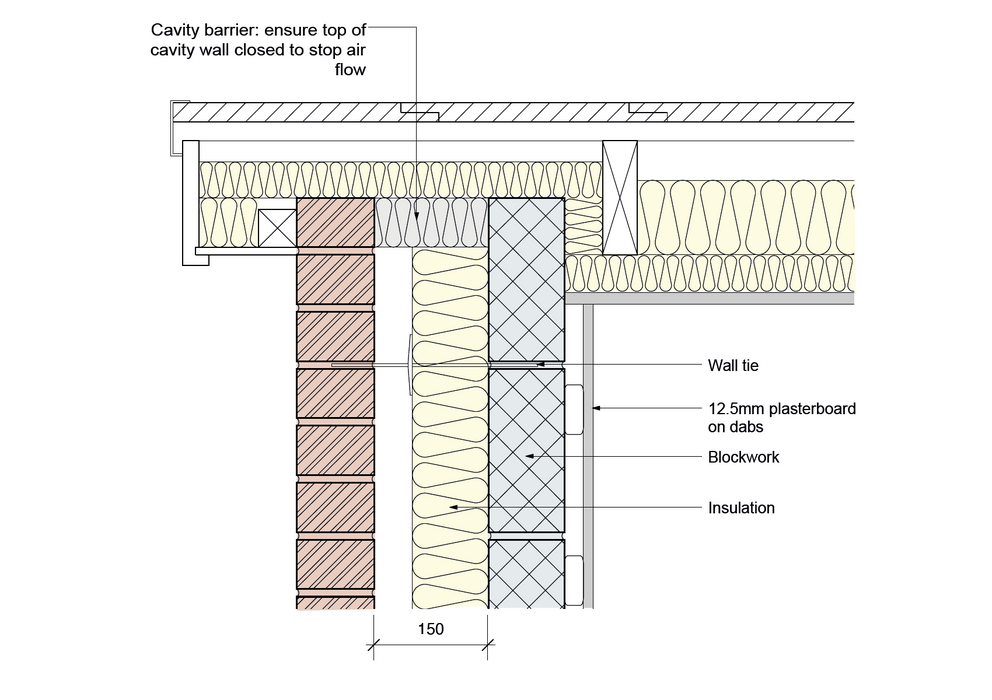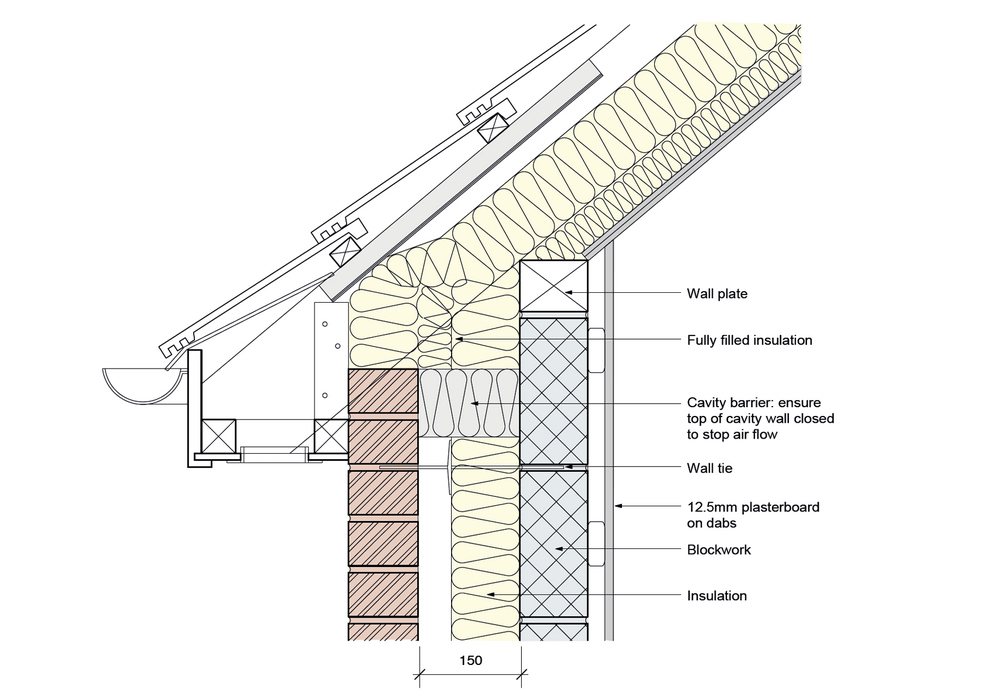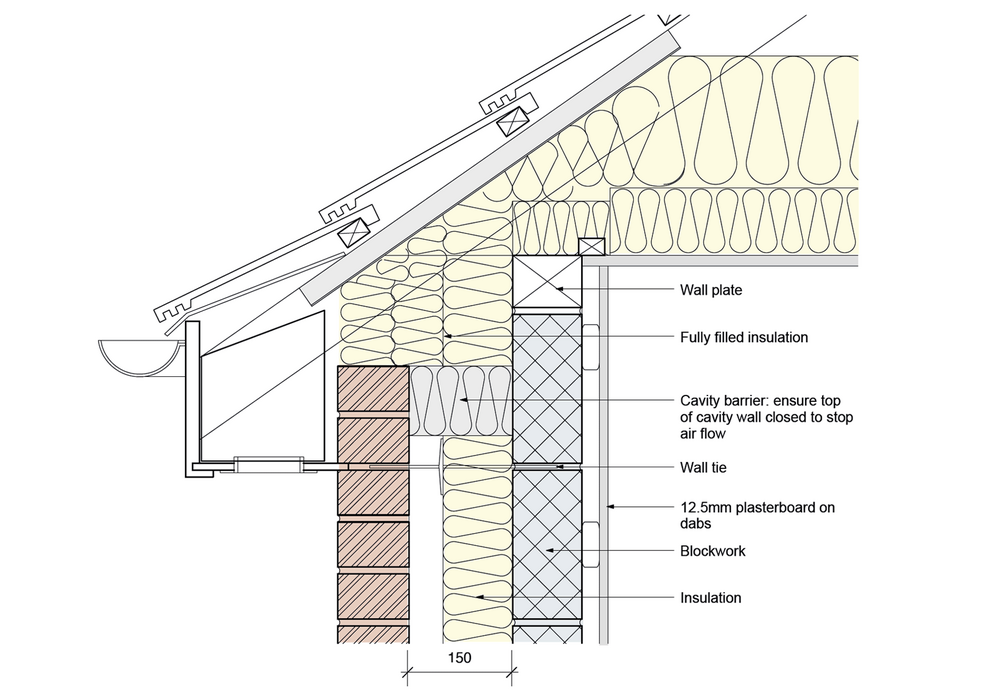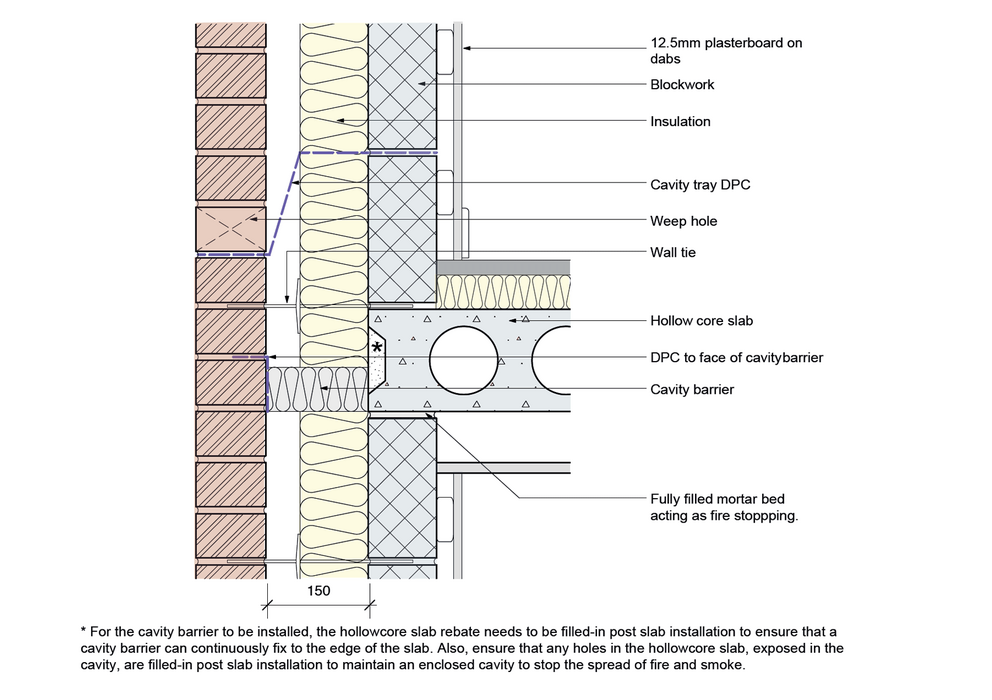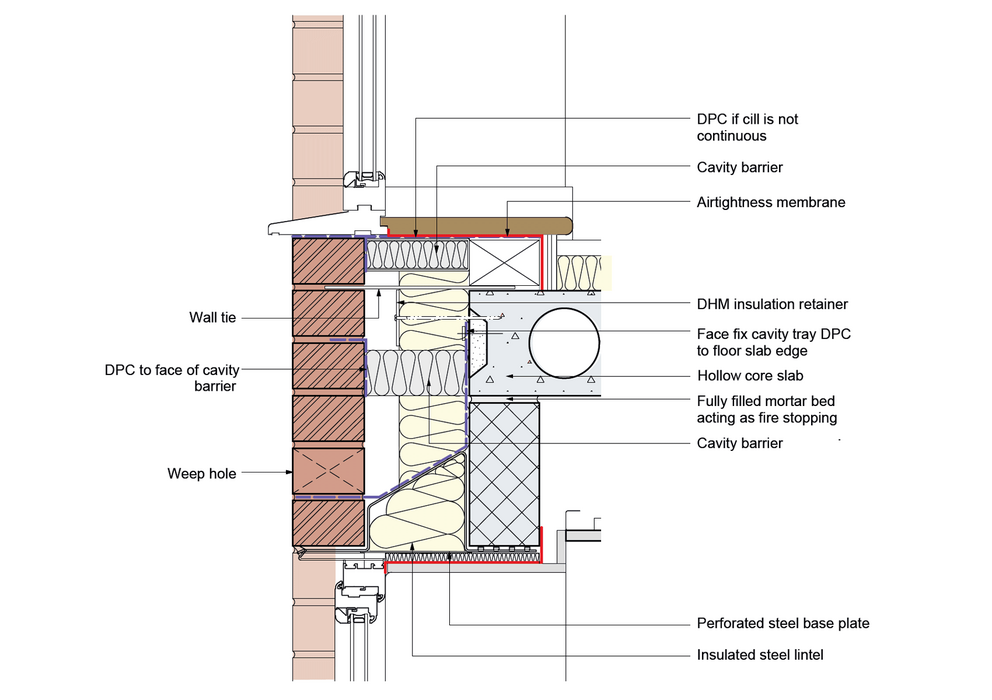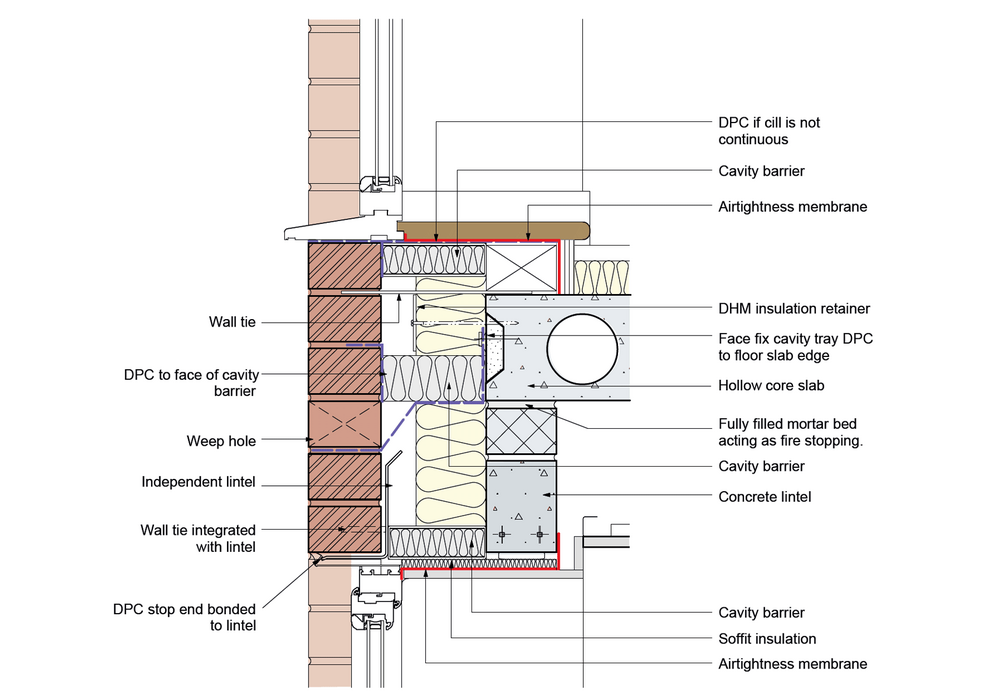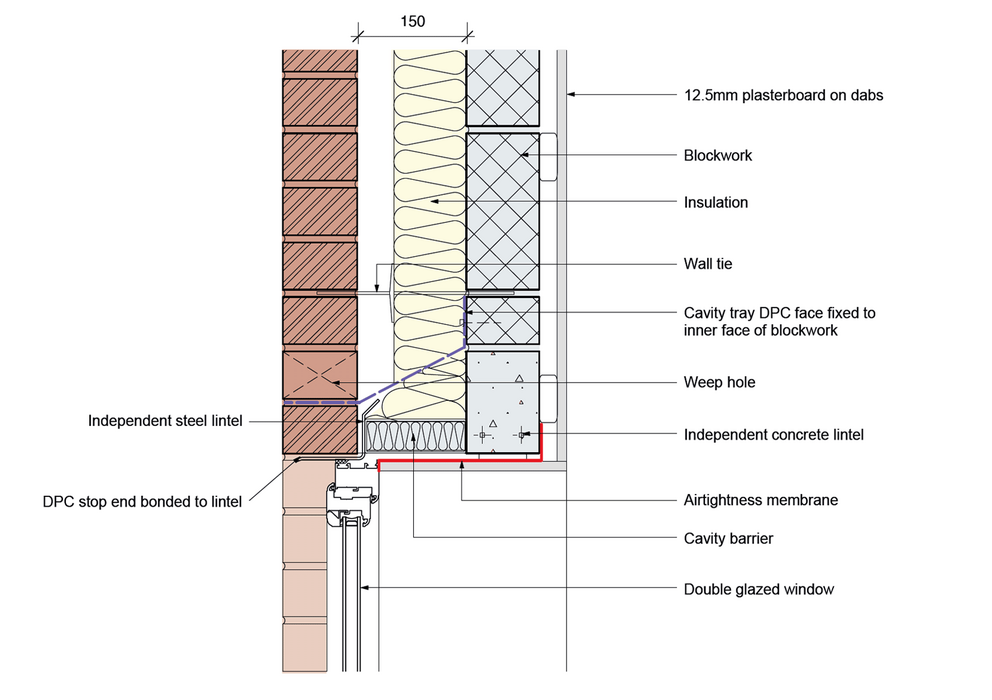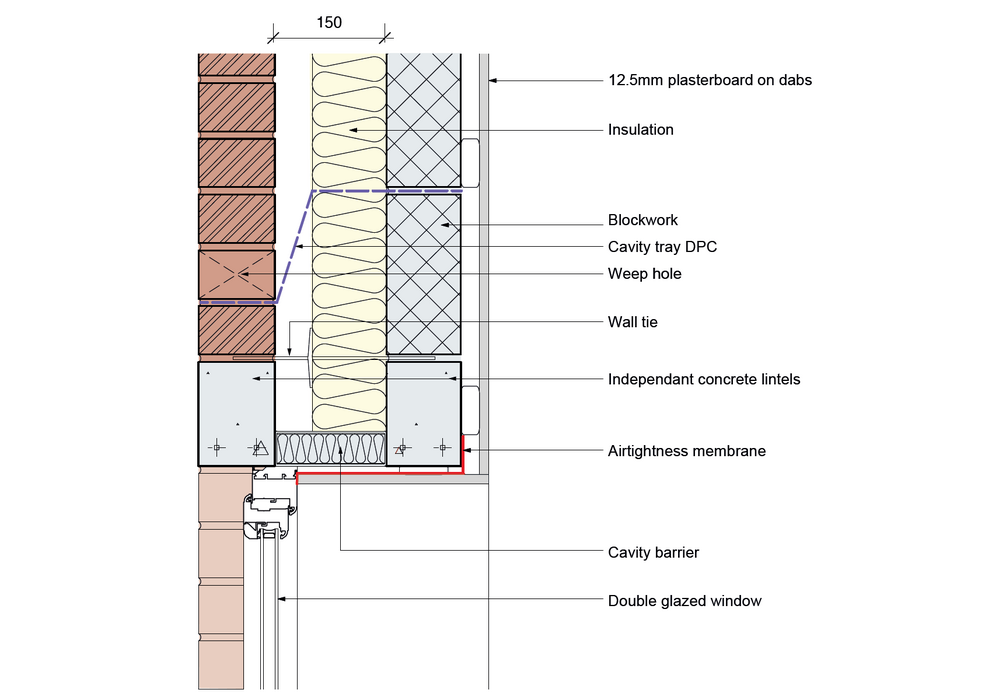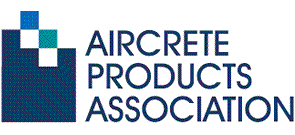Why Fire Detailing
In November 2018 changes to the Building Regulations were made as a result of a catastrophic fire. The fire at Grenfell Tower brought into question the regulatory control over the construction of external walls. This led to the Building Regulations being updated to stop the use of combustible material in the external walls of residential buildings over 11m in height. The guidance given in Approved Document B: volume 2 (ADBv2) was also updated to reflect this change.A further change was made to ADBv1 and 2 in 2020 to reduce the height limit for the requirement of sprinklers to be installed in new homes, from 30m to 11m. However, the control of material in the external wall of a new home less than 11m high and constructed of two leaves of masonry has not changed. Due to the inherent fire resistance of clay bricks and concrete blocks, it is still allowable to use combustible materials within masonry cavity walls.


